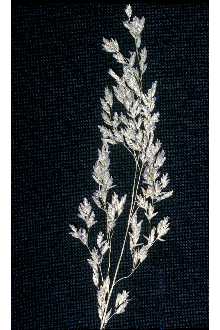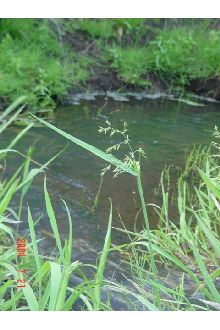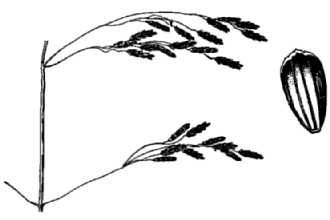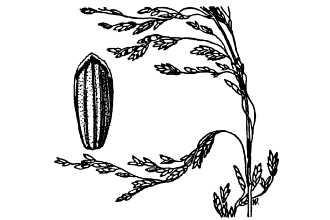Glyceria otisii Hitchc.
Scientific Name: Glyceria otisii Hitchc.
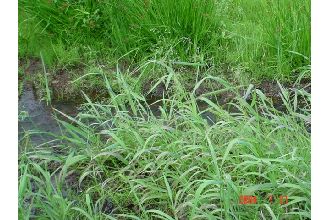
| General Information | |
|---|---|
| Usda Symbol | GLOT |
| Group | Monocot |
| Life Cycle | Perennial |
| Growth Habits | Graminoid |
| Native Locations | GLOT |
Plant Guide
Use soil moisture sensors to measure the soil moisture of Glyceria otisii Hitchc..
Fact Sheet
Alternate Names
Other common names include weak alkaligrass, weak mannagrass, and weak false manna. Synonyms include Glyceria pauciflora, Glyceria otisii, Pucinellia pauciflora, and Torreyochloa pauciflora.
Uses
Pale false mannagrass has potential for restoration and enhancement of forested, prairie, and riparian wetlands, as well as other non tidal wetland plant communities. Its underground creeping stems (rhizomes) improve the plants ability to stabilize soils along faster moving streams and watercourses. The seeds are probably eaten by waterfowl and other birds, while the foliage provides cover for wildlife. The value of false mannagrass as forage for livestock, large game, and small mammals is not widely known. It may have potential for use in ditches or swales designed to filter agricultural or stormwater runoff. Strong rhizome production coupled with low lying, curved stems that root from the joints, makes this species a good candidate for streambank, channel, and shoreline stabilization. Dale Darris USDA NRCS Corvallis PMC
Status
Please consult the PLANTS Web site and your State Department of Natural Resources for this plant’s current status (e.g. threatened or endangered species, state noxious status, and wetland indicator values).
Description and Adaptation
Adaptation
Adaptation
Pale false mannagrass is a native, perennial cool season grass that grows 30 to 150 cm tall. The stems are erect to decumbent (low lying and bent upward) and may root where the nodes (joints) touch the ground. It actively spreads by rhizomes (underground shoots). Leaf blades are rolled when young, flat when mature, 3-15 mm wide, and slightly rough to the touch on one or both sides. The flower head (panicle) is loose and open, 7 to 20 cm long, with ascending or drooping branches. Pale false mannagrass occurs from Alaska to California and east to South Dakota and New Mexico. It can found from near sea-level to timberline in the Mountains. Key to identification: Pale false mannagrass is easily confused with true mannagrasses (Glyceria spp.), which it was once classified as. However, its leaf sheaths (lower part of the leaf surrounding the stem) are open rather than closed and have cross- markings. The species is also similar to true alkaligrasses (Pucinellia spp.). Consult with a botanical key for distinguishing traits. Relative abundance in the wild: Scattered in Oregon and Washington in marshy areas and roadside ditches where reed canarygrass (Phalaris arundinacea) does not dominate. Its abundance elsewhere is unknown. Seed retention is fair to good, production is high and seed fill is excellent. False mannagrass also ripens over several weeks in late summer wherever soil moisture is non-uniform. These features make wild collection easy. Adaptation: Pale false mannagrass is found in freshwater marshes, swamps, wet forest openings, wet meadows, ditches and other depressions. It grows in acid soils comprised of loamy, organic, or sandy substrates. The species tolerance to salinity, alkalinity, and high acidity is not well reported. It typically occurs on continuously moist, saturated, and shallow flooded areas. At moderate elevations in Oregon, false mannagrass can form its own plant association where it comprises 30 to 80 percent of the total cover. Most of the surface area between plants is mud or open water. This species is found in full sun to intermediate shade but may prefer the latter.
Establishment
The seed has no dormancy and germinates when fall or spring sown, It has a weak hull and requires no special conditioning, Establishment rate is moderate as is rhizome spread, There are approximately 1,955,000 seeds per pound (+/- 30%), A seeding rate of 1 lb/ac of pure lives seeds will result in about 45 live seeds per square foot, Suggested rates are 1 to 4 lbs/ac when sown as a single species, Use soil moisture sensors to measure the soil moisture of Glyceria otisii Hitchc.., Rhizomes and plugs may also be used, Recommended spacing is 8 to 16 inches (20 to 40 cm) for uniform aerial coverage within one and two years respectively,
Management
There is a lack of information about the management of this species for livestock or other uses. When cultivated for seed, poorly drained soils or summer irrigation is required along with moderate soil fertility levels. Tolerance to wildfire or prescribed burning is not well documented.
